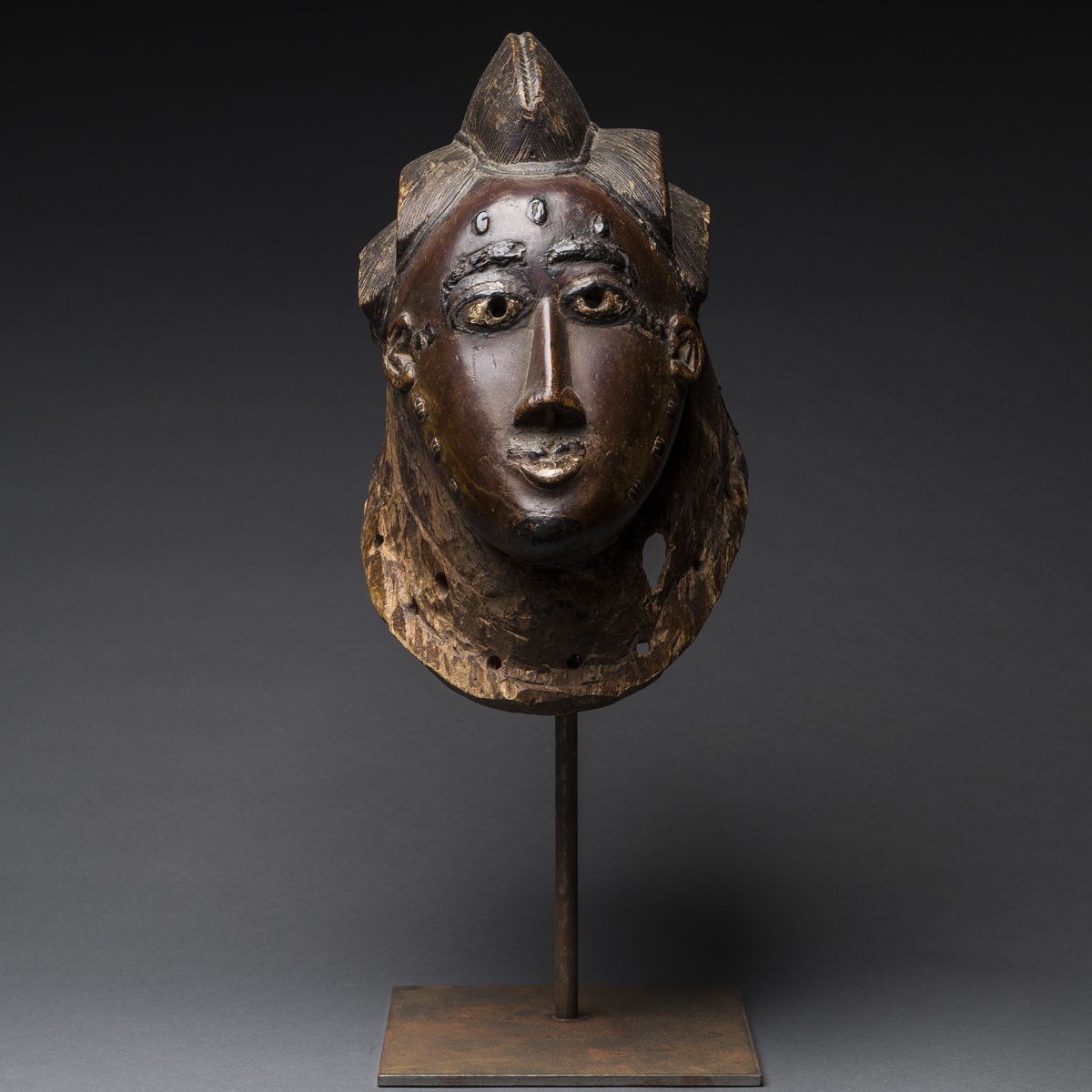Southern Guro Wooden Mask, 19th Century CE - 20th Century CE
Wood
height 39.4 cm
height 15 1/2 in
height 15 1/2 in
PF.5350 (LSO)
Further images
This powerful Guro mask is an exceptional example of its type. It comprises a large back into which the face of the wearer can fit, making it a very “deep”...
This powerful Guro mask is an exceptional example of its type. It comprises a large back into which the face of the wearer can fit, making it a very “deep” form, while the mask itself is somewhat smaller, mounted high onto the back. The face is elongated and serene, with back-and-white eyes, a very long nose and pursed lips. The ears are small and side-mounted. Other detailing includes scarifications by the ears, on the forehead and around the perimeter of the jaw. The coiffure is formed into five hatched arched crests, the central one of which is the highest, most pronounced and most detailed. The mount/back has been used to attach numerous costumes, and has been repaired with a metal plate. The whole mask is well patinated with excellent use wear.
The Guro are sandwiched between the Yaure and Bete groups, and their art displays the influence of both. They were originally known as the Kweni but were renamed the Guro by the French who colonised their homeland in the early 20th century. They are renowned for the elegant and highly finished nature of their works, especially masks, of which there are various types that are further subdivided into the Western, Southern and Northern styles. The current mask is an example of the Southern style.
Southern masks had a number of roles, and were often horned. Some of them were used for the funerals of important men, and could not be seen by women. The most notable examples were used for judicial purposes, although they also served an apotropaic function. Most good examples are heavily worn, implying that their importance and severity increased by association with many “judges” over the years.
This is a superb example of the genre and a good addition to any collection or sophisticated domestic setting.
The Guro are sandwiched between the Yaure and Bete groups, and their art displays the influence of both. They were originally known as the Kweni but were renamed the Guro by the French who colonised their homeland in the early 20th century. They are renowned for the elegant and highly finished nature of their works, especially masks, of which there are various types that are further subdivided into the Western, Southern and Northern styles. The current mask is an example of the Southern style.
Southern masks had a number of roles, and were often horned. Some of them were used for the funerals of important men, and could not be seen by women. The most notable examples were used for judicial purposes, although they also served an apotropaic function. Most good examples are heavily worn, implying that their importance and severity increased by association with many “judges” over the years.
This is a superb example of the genre and a good addition to any collection or sophisticated domestic setting.
Literature
V27







